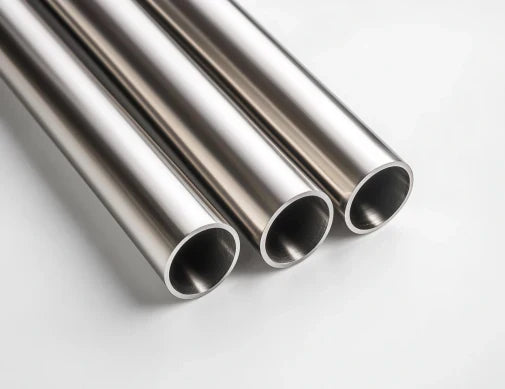
Does a Magnet Stick to Aluminum or Stainless Steel?
Table of Contents
Introduction
Magnets are fascinating—they stick to some metals but not others. If you’ve ever wondered, "Does a magnet stick to aluminum or stainless steel?", the answer isn’t always straightforward.
In this guide, we’ll break it down in plain English, so you’ll know exactly what to expect when you hold a magnet up to different metals. We’ll also cover some related questions like:
- Does a magnet stick to steel? (Sometimes, but not always.)
-
Can you weld stainless with mild steel wire? (Yes, but there’s a catch.)
- And most importantly, why do some metals attract magnets while others don’t?
By the end, you’ll understand why your fridge magnet sticks to some stainless steel appliances but not others—and what that means for your DIY projects.
Why Do Magnets Stick to Some Metals but Not Others?
Magnets work because of something called magnetic properties. Not all metals have them. Here's the basic rule:
- Ferromagnetic metals (like iron, nickel, and cobalt) stick strongly to magnets.
- Non-magnetic metals (like aluminum, copper, and lead) don't stick at all.
- Some stainless steels are in between—they might be slightly magnetic or not at all.
So, when you ask, "Does a magnet stick to steel?", the answer depends on what kind of steel you're testing.
Does a Magnet Stick to Aluminum?
No, aluminum is not magnetic.
If you hold a magnet up to an aluminum can, a bike frame, or aluminum foil, it won’t stick. Here’s why:
- Aluminum is a non-ferrous metal, meaning it doesn’t contain iron (the key ingredient for magnetism).
- Even if you try really strong magnets, they won’t attract aluminum.
🔹 Why does this matter?
- If you’re working on a project and need a non-magnetic metal, aluminum is a great choice.
- Some security systems use aluminum because it doesn’t interfere with magnetic sensors.
Does a Magnet Stick to Stainless Steel?
This is where things get interesting. Some stainless steels stick to magnets, and some don’t. It all depends on the type of stainless steel.
1. Magnetic Stainless Steel (Ferritic & Martensitic)
- 400-series stainless steel (like 430) is magnetic.
- Knives, some appliances, and industrial tools often use this type.
- Why? These steels have more iron and a different atomic structure that magnets love.
✅ Test it yourself: If you hold a magnet to a cheap stainless steel knife or a dishwasher panel, it’ll probably stick.
2. Non-Magnetic Stainless Steel (Austenitic)
- 300-series stainless steel (like 304 and 316) is usually non-magnetic.
- Kitchen sinks, high-end appliances, and medical tools are often made from this.
- Why? These steels have more nickel and chromium, which mess with the magnetic field.
⚠️ But wait! Even 304 and 316 stainless steel can become slightly magnetic if you bend, cut, or weld them.
🔹 Real-life example:
- If you try sticking a fridge magnet to a stainless steel fridge, it might not hold well.
- But if you test a stainless steel bolt or a bent piece, the magnet might stick weakly.
Can You Weld Stainless Steel with Mild Steel Wire?
If you’re into DIY metalwork, you might wonder: "Can you weld stainless with mild steel wire?"
The short answer: Yes, but it’s not ideal.
Here’s why:
- Mild steel wire is cheaper, but it’s not made for stainless steel.
- The weld won’t be as strong or corrosion-resistant.
- It can cause rust spots where the two metals meet.
✅ Better options:
- Use stainless steel welding wire for a stronger, rust-proof weld.
- If you must use mild steel wire, keep the project indoors (away from rain and humidity).
Why Does This Matter in Real Life?
Knowing whether a magnet sticks to a metal can help with:
1. Sorting Scrap Metal
- If a magnet sticks, it’s likely steel or iron (worth less at scrap yards).
- If it doesn’t stick, it could be aluminum, copper, or high-grade stainless steel (more valuable).
2. Choosing the Right Metal for Projects
- Need a magnetic metal for a DIY tool holder? Use 400-series stainless steel.
- Need a non-magnetic metal for electronics? Go for aluminum or 300-series stainless steel.
3. Buying Appliances
- Some "stainless steel" fridges are actually magnetic (cheaper steel with a stainless coating).
- True 304/316 stainless steel appliances are usually non-magnetic (and more expensive).
Myths About Magnets and Metal
❌ "If a magnet doesn’t stick, it’s not real stainless steel."
- False! High-quality 304/316 stainless steel is often non-magnetic.
❌ "All stainless steel is the same."
- Nope! 400-series is magnetic, 300-series usually isn’t.
❌ "You can’t weld stainless steel to regular steel."
You can, but it’s better to use the right wire to avoid rust.
Final Verdict: Does a Magnet Stick to Aluminum or Stainless Steel?
| Metal | Magnetic? | Notes |
|---|---|---|
| Aluminum | ❌ No | Never sticks to magnets. |
| Mild Steel | ✅ Yes | Always magnetic. |
| 400-Series Stainless Steel | ✅ Yes | Used in knives, cheap appliances. |
| 304/316 Stainless Steel | ❌ Usually no | Can become slightly magnetic if bent or welded. |
When It Matters Most:
- Sorting scrap metal (magnetic = steel, non-magnetic = aluminum/stainless).
- Choosing metal for DIY projects (need magnetism? Pick the right steel).
- Buying appliances (non-magnetic stainless = higher quality).
Bottom Line
- Aluminum? Never magnetic.
- Stainless steel? Depends on the type—400-series sticks, 300-series usually doesn't.
- Can you weld stainless with mild steel wire? Yes, but it's not the best idea.
Now you know why some metals attract magnets and others don't—and how to use that knowledge in real life! 🧲